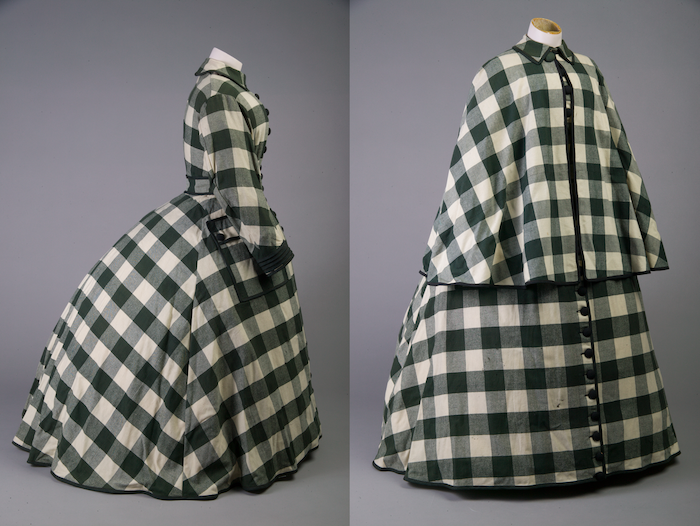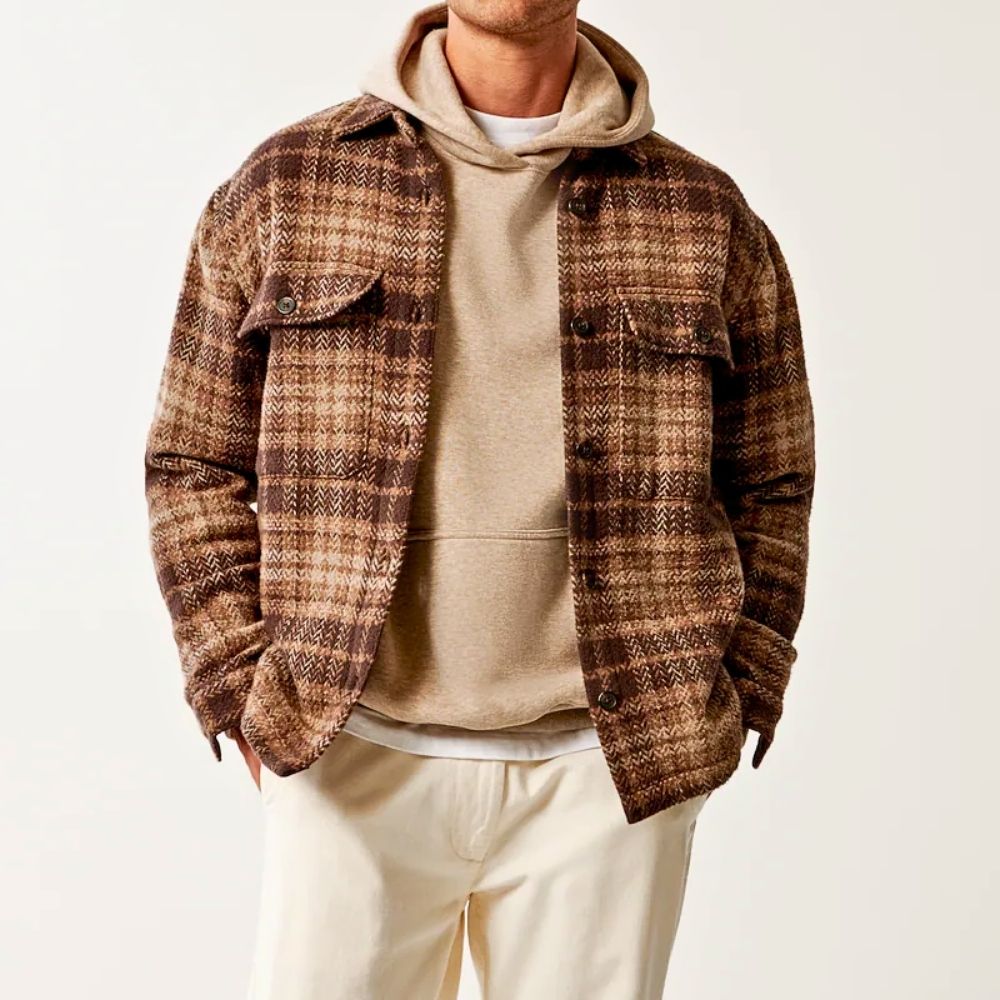Table of Content
Have you ever wondered whether plaid vs flannel are the same thing? You’re not alone! Many people use the terms interchangeably, but plaid and flannel are completely different concepts. Plaid refers to a pattern, while flannel is a material. Together, they make one of the most iconic combinations in fashion, but their distinctions are worth exploring. Let’s dive into the fascinating world of plaid vs flannel.
Plaid vs Flannel: Overview Comparison

Aspect |
Plaid |
Flannel |
Definition |
A pattern featuring crisscrossing horizontal and vertical lines, often in multiple colors. |
A soft, warm fabric traditionally made from wool or cotton, known for its fuzzy texture. |
Origin |
Originated in Scotland, where it's known as "tartan." |
Developed in 17th-century Wales as a practical fabric for warmth. |
Material |
It is not tied to specific fabric materials like cotton, wool, or synthetics. |
Typically made from wool, cotton, or synthetic fibers. |
Usage |
Commonly used in clothing patterns, accessories, and home décor items. |
Used for warm clothing like shirts, pajamas, bedding, and blankets. |
Association |
Often linked with Scottish heritage and traditional attire. |
Associated with comfort, warmth, and casual wear. |
Pattern Variations |
Includes various designs like tartan, gingham, and checkered patterns. |
It can feature different patterns, with plaid being the most common and available in solid colors. |
The Basics of Plaid
What is Plaid?
Plaid is a pattern, not a material. It consists of horizontal and vertical lines crossing each other to form squares or rectangles, creating a crisscross design. Plaid patterns can vary in complexity, from simple two-color grids to intricate designs with multiple hues and line widths. This adaptability makes plaid a staple in both casual and formal fashion. It’s worth noting that the difference between plaid and flannel lies in this distinction—plaid is visual, while flannel is tactile.

Historical Roots of Plaid
Plaid, pronounced "played", traces its origins back to Scotland, first recorded in the Scottish Gaelic language around 1505-1512. The term "plaide", meaning blanket, originally referred to the woven fabric used by Highland clans. Over time, plaid evolved from a practical garment into a global fashion staple.
In the Scottish Highlands, plaid was a large woolen fabric piece used for warmth and protection against the harsh climate. It was typically about six feet long and draped over the shoulder or worn as a cloak. Its patterns and colors often signified clan or family affiliations, making it a key element of Scottish identity.
During the 18th and 19th centuries, plaid expanded beyond its practical use. It gained popularity in fashion, both within Scotland and internationally. In the United States, "plaid" became synonymous with the tartan pattern, deeply tied to Scottish heritage.

Characteristics of Plaid
- Recognizable Pattern: A crisscross design of horizontal and vertical lines.
Color Variations: Plaid patterns can feature bold or subtle color combinations, making them suitable for various styles.
Versatility: From traditional tartans to modern reinterpretations, plaid adapts effortlessly to casual, formal, and trendy attire.

🧵 Discover the world of plaid! Explore the different types of plaid patterns, from timeless classics to modern designs, in our latest blog. 👉 Types of Plaid Patterns: From Classic to Contemporary
Popular Materials for Plaid
Plaid patterns are not restricted to one fabric and can be woven or printed on various materials, such as:
Cotton: Lightweight and breathable, perfect for casual shirts and dresses.
Wool: Ideal for kilts, scarves, and winter coats.
Polyester: Durable and wrinkle-resistant, often used in contemporary fashion.
Silk: Adds a luxurious touch to ties, blouses, and scarves.
The Basics of Flannel
What is Flannel?

Flannel is a fabric known for its softness and warmth, achieved through a unique brushing process. This fabric is prized for its cozy texture and excellent insulation. It is a favorite for cold-weather clothing, bedding, and pajamas. Flannel offers functionality and comfort, unlike plaid, which is just a design. A classic comparison in wardrobes is the plaid shirt vs flannel shirt, as the former emphasizes design, while the latter is all about material.
Historical Roots of Flannel
Flannel originated in 17th-century Wales, crafted from coarse wool to provide warmth and durability for farmers facing harsh weather. Known as "Welsh cotton", it quickly became a practical material for blankets and workwear. The industrialization of textile production in Wales allowed flannel to expand across Europe, with the term appearing in France ("flanelle") and Germany ("flanell") by the 18th century.
In the 19th century, flannel evolved as silk and cotton replaced wool, making it suitable for lightweight suits and cricket pants. It gained popularity in America for its ruggedness, becoming a staple for the working class.

Flannel experienced a cultural resurgence in the 20th century, notably during the 1990s grunge movement when bands like Nirvana popularized flannel shirts, associating them with rebellion and alternative fashion. Today, flannel is celebrated for its warmth and versatility in clothing, bedding, and accessories, transcending its utilitarian origins.
🔍 Curious about flannel fabrics? Learn all about the different types and their unique uses in our latest blog. 👉 Read more here
Characteristics of Flannel
- Soft Texture: Achieved through brushing techniques that raise the fibers on the fabric’s surface.
Thermal Properties: Excellent at retaining heat, making it perfect for colder climates.
Versatile Appearance: While plaid is the most popular pattern, flannel is also available in solid colors and other designs.

Common Patterns for Flannel
Although plaid is the most iconic pattern for flannel, it also features:
Solid Colors: For minimalist and versatile styles.
Stripes: Adding a touch of variety.
Abstract Prints: For a modern twist on a classic fabric.
Plaid vs Flannel: A Detailed Comparison
Pattern vs. Fabric
The primary distinction between plaid and flannel lies in their very nature:
Plaid: Plaid is a pattern consisting of intersecting horizontal and vertical lines that form squares or rectangles. It can be printed or woven onto cotton, silk, wool, or polyester fabrics. This design is versatile, adorning garments like shirts, skirts, and even accessories like scarves and bags. However, plaid strictly refers to the design and not the material.
Flannel: Flannel, by contrast, is a fabric known for its soft, warm, and slightly fuzzy texture. Traditionally made from wool, modern flannel is often crafted from cotton or synthetic fibers. While flannel frequently features plaid designs, it can also appear in solid colors or patterns.
In essence, plaid is about the look, while flannel is about the feel.

Functional Differences
When it comes to functionality, plaid and flannel serve entirely different purposes:
Plaid: The plaid pattern is all about style and decoration. Its crisscross design adds personality and tradition to clothing and accessories, whether a bold plaid blazer for a statement outfit or a subtle plaid scarf for an everyday look.
Flannel: Flannel is prized for its practicality. Known for its insulating properties, flannel is ideal for cold-weather apparel such as shirts, pajamas, and jackets. Its comfort and warmth make it a go-to material for winter clothing and household textiles like blankets and bed sheets.
While plaid focuses on visual appeal, flannel is all about providing cozy comfort.


Cultural and Historical Contexts
- Plaid: Rooted in Scottish heritage, plaid—traditionally called tartan—was historically used to represent clans and regional identities. Over time, it became a universal symbol of tradition, evolving into a stylish design choice for modern fashion.
Flannel: Originally developed in 17th-century Wales, flannel was a practical fabric for farmers braving cold and harsh weather. It later gained popularity as workwear for blue-collar laborers and became a cultural icon during the grunge movement of the 1990s.
Seasonal Preferences
The seasonal use of plaid and flannel highlights their distinct characteristics:
Plaid: Because it’s a pattern, plaid is suitable year-round. Lightweight plaid cotton shirts are perfect for spring and summer. In contrast, heavier plaid designs on wool or flannel fabrics work well for autumn and winter. Its adaptability to various materials ensures its place in wardrobes across all seasons.
Flannel: Due to its heat-retaining qualities, flannel is best suited for cooler months like fall and winter. Flannel-lined jackets, pants, and shirts are staples for layering in cold weather, offering style and functionality.


Maintenance and Care
Proper care for plaid and flannel items ensures their longevity and keeps them looking and feeling their best:
-
Plaid Garments: Since plaid is a pattern, the care instructions depend on the printed or woven fabric.
Cotton Plaid Shirts: These can typically be machine-washed in cold water and tumble-dried on low heat.
Wool Plaid Garments: Wool items should be hand-washed or dry-cleaned to prevent shrinking.
Silk Plaid Ties or Scarves: These delicate items require professional dry cleaning to preserve their sheen and prevent damage.
-
Flannel Items: Flannel’s soft texture requires gentle handling to maintain its plush feel.
Washing: Use a gentle cycle with cold or warm water and mild detergent. Avoid fabric softeners, as they can flatten the raised fibers that give flannel its signature texture.
Drying: Air drying is best for flannel, but if you’re short on time, use a low-heat setting on the dryer. High heat can cause flannel to shrink or lose its softness.
Ironing: If necessary, use a warm iron, but always check the fabric label to ensure you don’t damage the material.
Styling Tips for Plaid and Flannel
How to Wear Plaid
- Casual Look: Pair a plaid shirt with jeans and sneakers for a laid-back vibe.
Semi-Formal: A plaid blazer adds sophistication when matched with neutral trousers.
Accessories: Incorporate plaid scarves, bags, or ties for subtle elegance.

How to Style Flannel
- Cozy Layers: Wear a flannel shirt over a plain T-shirt for a relaxed, autumnal outfit.
Winter Essentials: Flannel-lined jackets and pants provide added warmth.
Pajamas: Flannel sleepwear is a timeless choice for cold nights.

Combining Plaid and Flannel
- Pair a plaid flannel shirt with solid-colored pants for a balanced look.
Add a plaid flannel scarf for a touch of cozy sophistication.
Avoid clashing patterns by keeping other elements of your outfit simple.
Misconceptions About Plaid and Flannel
- "Plaid is a fabric": Plaid is a pattern, not a material.
"All flannel shirts are plaid": Flannel can feature various patterns or no pattern at all.
"Plaid and flannel are interchangeable": While often paired, they describe entirely different things.
✨ Discover the ultimate guide to Gingham vs Plaid: Key Differences You Need to Know and master the art of styling these timeless patterns. 📖 Read more on our blog now!

Conclusion
Plaid vs flannel may often be paired together but they serve different purposes. Plaid is a pattern that adds style and character to garments and accessories. At the same time, flannel is a fabric renowned for warmth and comfort. By understanding the key differences between plaid and flannel, you can confidently decide which best suits your needs— the timeless look of plaid or the cozy feel of flannel. Embrace the best of both to elevate your wardrobe and stay stylish throughout the year.
Frequently Asked Questions
Is flannel and plaid the same?
No, flannel and plaid are not the same. Flannel is a soft, warm fabric often used for cold-weather clothing and bedding, while plaid is a crisscross pattern that can appear on various fabrics, including flannel.
Is flannel a pattern or material?
Flannel is a material, not a pattern. It is known for its fuzzy, soft texture and insulating properties, often featuring plaid as a popular design but also available in solid colors and other patterns.
Why do Americans call it plaid?
In Scotland, a pattern consisting of crisscrossed horizontal and vertical bands of multiple colors is referred to as tartan, “plaid” is derived from a Scottish Gaelic word that originally referred to a specific garment: a blanket or cape that would be worn over the shoulders.
What is flannel called in the UK?
It's called a plaid or a plaid shirt in my part of England. Here a flannel means a washcloth (cue confusion when I mentioned putting a flannel on before we left the house).











